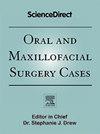A型肉毒毒素对肌肉源性颞下颌关节紊乱患者咬肌的影响:1例报告
Q3 Dentistry
引用次数: 0
摘要
颞下颌关节紊乱(TMDs)通常表现为疼痛、下颌运动、功能障碍或关节声音等症状和体征。A型肉毒毒素(BTX/A)是一种抑制神经递质乙酰胆碱在神经肌肉交界处释放的生物毒素。这种毒素用于治疗咬肌过度活跃和TMD症状。本病例报告旨在通过肌电图(EMG)研究BTX/A注射对有疼痛症状的颞下颌关节痛患者咬肌和翼状外侧肌的影响,治疗后随访6个月。每次就诊时,分别在注射前、注射后2周、6周、12周和24周的5个时间点对临床效果进行评估,评估依据疼痛强度(NPRS)、磨牙问卷和最大开口度。根据本病例报告,研究参数有明显改善,肌电图显示注射肌肉的电磁活动明显减少;因此,BTX/A可被认为是缓解肌肉源性tmd患者症状和改善生活质量的有效治疗方法,依托肌电图作为有效的诊断工具和对治疗结果的后续评价。本文章由计算机程序翻译,如有差异,请以英文原文为准。
Effects of botulinum toxin type A on the masseter muscles of a patient with a temporomandibular joint disorder of muscular origin: A case report
Temporomandibular joint disorders (TMDs) typically manifest with symptoms and signs such as pain, mandibular movement, dysfunction, or joint sounds. Botulinum toxin type A (BTX/A) is a biological toxin that inhibits the release of the neurotransmitter acetylcholine at the neuromuscular junction. This toxin is used to treat hyperactivity of masseter muscles and TMD symptoms. This case report aimed to investigate the effects of BTX/A injection in the masseter and lateral pterygoid muscles of a patient with painful symptoms of TMDs via electromyography (EMG), with a follow-up of six months post-treatment. During each visit, the clinical effects, which were evaluated based on pain intensity (NPRS), the bruxism questionnaire, and maximum mouth opening, were evaluated at five-time points, pre-injection and 2, 6, 12, and 24 weeks after the injection. Based on this case report, there was a clear improvement in the studied parameters, with a significant decrease in the electromagnetic activity of the injected muscles as shown by EMG; thus, BTX/A can be considered an effective treatment to relieve symptoms and improve the quality of life in patients with TMDs of muscular origin, relying on EMG as an effective diagnostic tool and for subsequent evaluation of treatment results.
求助全文
通过发布文献求助,成功后即可免费获取论文全文。
去求助
来源期刊

Oral and Maxillofacial Surgery Cases
Medicine-Otorhinolaryngology
CiteScore
0.60
自引率
0.00%
发文量
43
审稿时长
69 days
期刊介绍:
Oral and Maxillofacial Surgery Cases is a surgical journal dedicated to publishing case reports and case series only which must be original, educational, rare conditions or findings, or clinically interesting to an international audience of surgeons and clinicians. Case series can be prospective or retrospective and examine the outcomes of management or mechanisms in more than one patient. Case reports may include new or modified methodology and treatment, uncommon findings, and mechanisms. All case reports and case series will be peer reviewed for acceptance for publication in the Journal.
 求助内容:
求助内容: 应助结果提醒方式:
应助结果提醒方式:


